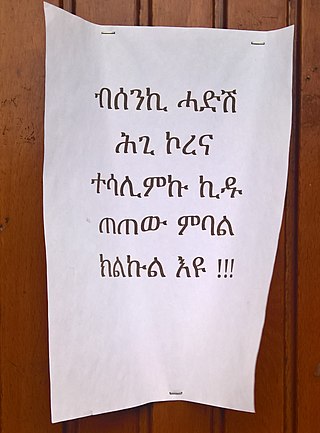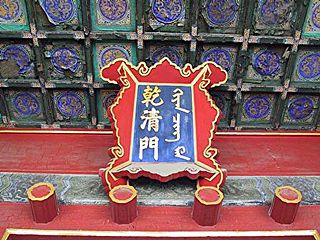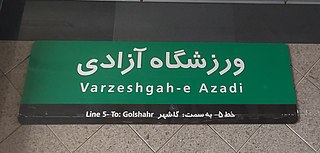There are several systems for transliteration of the Manchu alphabet, which is used for writing the Manchu and Xibe languages. These include transliterations in Latin script and in Cyrillic script.
There are several systems for transliteration of the Manchu alphabet, which is used for writing the Manchu and Xibe languages. These include transliterations in Latin script and in Cyrillic script.
The romanization used in most recent western publications on Manchu is the one employed by the American sinologist Jerry Norman in his Comprehensive Manchu-English Dictionary (2013), a central reference tool in modern Manchu studies. [1]
This system, which has become the de facto modern standard in English-language publications, is the most recent incarnation of a system originally designed by the German linguist Hans Conon von der Gabelentz for his 1864 edition of the Manchu translation of the Four Books and other Chinese classics. As he explains:
"Because Manchu possesses an alphabetic script, it was acceptable, as being without any disadvantage whatsoever, to replace the indigenous Manchu script, the use of which would have made printing much more difficult and expensive, by our alphabet. I started out from the principle of substituting a single symbol for each Manchu letter, while avoiding the addition of diacritical marks as much as possible." [2]
With his new system, Gabelentz did away with cumbersome transliterations such as dch, tch, kh, replacing them with j, c, h. The result has been described as a "simple and convenient system". [3]
Gabelentz also used this transliteration in his Manchu-German dictionary (1864), and the system was adopted unchanged by other German manchurists such as Erich Hauer for his dictionary (1952–55), and Erich Haenisch for his grammar (1961).
In the 19th century the system was adopted, with minor changes, by the French linguist Lucien Adam in his grammar (1873), by the Belgian linguist Charles de Harlez in his handbook (1884), and by the German diplomat and linguist Paul Georg von Möllendorff. In English-language publications, the latter is often incorrectly[ citation needed ] credited with being the inventor of the system, probably because his Manchu Grammar (1892) was the first book in English to use it. Thus Norman himself refers to "the Möllendorff system of romanization". [4] Authors writing in French and German generally recognize Gabelentz as its creator.
The system as used by Gabelentz (1864), Möllendorff (1892) and Norman (2013) is set out below, with the older system used by Gabelentz in his grammar (1832) added for comparison. Also in the table are the Pinyin-based system designed by Hu (1994) which is the standard in Chinese-language publications, and the input system of BabelPad. The table follows the traditional order of the Manchu alphabet. [5]
| Manchu script | IPA value | Gabelentz 1832 | Gabelentz 1864 | Möllendorff 1892 | Norman 2013 | Hu 1994 | Babel- Pad | Abkai |
|---|---|---|---|---|---|---|---|---|
| ᠠ | /a/ | a | ||||||
| ᡝ | /ə/ | e | ||||||
| ᡳ | /i/ | i | ||||||
| ᠣ | /o/ | o | ||||||
| ᡠ | /u/ | u | ||||||
| ᡡ | /ʊ/ | ô | ū | uu | v | |||
| ᠨ᠊ | /n/ | n | ||||||
| ᡴ᠊ | /qʰ/ | k | ||||||
| ᡤ᠊ | /q/ | g | ||||||
| ᡥ᠊ | /χ/ | kh | h | |||||
| ᠪ᠊ | /p/ | b | ||||||
| ᡦ᠊ | /pʰ/ | p | ||||||
| ᠰ᠊ | /s/, /ɕ/ | s | ||||||
| ᡧ᠊ | /ʃ/, /ɕ/ | ch | ś | š | sh | x | ||
| ᡨ᠊ | /tʰ/ | t | ||||||
| ᡩ᠊ | /t/ | d | ||||||
| ᠯ᠊ | /l/ | l | ||||||
| ᠮ᠊ | /m/ | m | ||||||
| ᠴ᠊ | /tʃʰ/, /tɕʰ/ | tch | c | ch | c | q | ||
| ᠵ᠊ | /tʃ/, /tɕ/ | dch | j | zh | j | |||
| ᠶ᠊ | /j/ | y | ||||||
| ᡴᡝ᠊ | /kʰ/ | k | ||||||
| ᡤᡝ᠊ | /k/ | g | ||||||
| ᡥᡝ᠊ | /x/ | kh | h | |||||
| ᠺ᠊ | /kʰ/ | k’ | k‘ | k’ | kk | kh | k‘ | |
| ᡬ᠊ | /k/ | g’ | g‘ | g’ | gg | gh | g‘ | |
| ᡭ᠊ | /x/ | kh’ | h’ | h‘ | h’ | hh | h‘ | |
| ᡵ᠊ | /r/ | r | ||||||
| ᡶ᠊ | /f/ | f | ||||||
| ᠸ᠊ | /w/ | w | ||||||
| ᡮ᠊ | /tsʰ/ | ts | z’ | ts‘ | ts | c | ts | c |
| ᡮᡟ | /tsʰɨ/ | tse | z’e | ts | cy | tsy | cyʻ | |
| ᡯ᠊ | /ts/ | ds | z | dz | z | dz | z | |
| ᡯᡳ᠌ | /tsɨ/ | dse | ze | dz | z | dz | zyʻ | |
| ᡰ᠊ | /ʐ/ | j | ź | ž | rr | z | rʻ | |
| ᠰᡟ | /sɨ/ | sse | s̱e | sy | syʻ | |||
| ᡱ᠊ᡳ | /tʂʰɨ/ | tchhi | c'i | c‘y | cy | chy | chi | qyʻ |
| ᡷ᠊ᡳ | /tʂɨ/ | dchhi | j'i | jy | zhy | zhi | jyʻ | |
The standard transliteration system follows the following conventions:
In Manchu orthography, the use of either the velars or the uvulars is largely predictable: velars before e, i, u and uvulars before a, o, ū. The standard transliteration leaves some ambiguity, as the spelling is not entirely predictable in syllable-final position. For example teksin "straight" can be written as ⟨teksin⟩ or as ⟨teqsin⟩.
In the standard transliteration, the spellings sh and th each represent two separate consonants, as in eshen/əsxən/ "uncle", butha/butχa/ "hunting, fishing". In Hu’s transliteration, separate s and h are written as s’h (es’hen) to avoid confusion with sh (Norman š). Gabelentz (1864) used the transcriptions sḥ and tḥ, with a dot under the h (esḥen, butḥa).
The following transliteration (paired in the table below with the Norman system) was designed by the Russian diplomat and linguist Ivan Zakharov and used in his important Manchu dictionary (1875) and grammar (1879). He applies the following rules:
| а | э | и | о | у | ӯ | |||
| a | e | i | o | u | ū | |||
| н- | на | нэ | ни | но | ну | нӯ | -нь | |
| n- | na | ne | ni | no | nu | nū | -n | |
| -нг- | нга | нгэ | нги | нго | нг̄у | нгу | -нъ | |
| -ngg- | -ngga | -ngge | -nggi | -nggo | -nggu | nggū | -ng | |
| -нк- | нка | нкэ | нки | нко | нк̄у | нку | ||
| -ngk- | ngka | -ngke | -ngki | ngko | -ngku | ngkū | ||
| к- | к̄а | кэ | ки | к̄о | к̄у | -к̄(ъ) | ||
| k- ⟨k-⟩ | k’a | ke | ki | k’o | ku | -k | ||
| к- | ка | ко | ку | -к(ъ) | ||||
| k- ⟨q-⟩ | ka | ko | kū | -k | ||||
| г- | г̄а | гэ | ги | г̄о | г̄у | |||
| g- ⟨g-⟩ | k’a | ke | ki | g’o | ku | |||
| г- | га | го | гу | |||||
| g- ⟨ɢ-⟩ | ga | go | gū | |||||
| х- | х̄а | хэ | хи | х̄о | х̄у | |||
| h- ⟨x-⟩ | h’a | he | hi | h’o | hu | |||
| х- | ха | хо | ху | |||||
| h- ⟨χ-⟩ | ha | ho | hū | |||||
| б- | ба | бэ | би | бо | бу | бӯ | -бъ | |
| b- | ba | be | bi | bo | bu | bū | -b | |
| п- | па | пэ | пи | по | пу | пӯ | ||
| p- | pa | pe | pi | po | pu | pū | ||
| с- | са | сэ | си | со | су | сӯ | -съ | |
| s- | sa | se | si | so | su | sū | -s | |
| cы | ||||||||
| sy | Pinyin si | |||||||
| ш- | ша | шэ | ши | шо | шу | шӯ | ||
| š- | ša | še | ši | šo | šu | šū | ||
| т- | та | тэ | ти | то | ту | тӯ | -тъ | |
| t- | ta | te | ti | to | tu | tū | -t | |
| д- | да | дэ | ди | до | ду | дӯ | ||
| d- | da | de | di | do | du | dū | ||
| л- | ла | лэ | ли | ло | лу | лӯ | -лъ | |
| l- | la | le | li | lo | lu | lū | -l | |
| м- | ма | мэ | ми | мо | му | мӯ | -мъ | |
| m- | ma | me | mi | mo | mu | mū | -m | |
| ч- | ча | чэ | ци | чо | чу | чӯ | ||
| c- | ca | ce | ci | co | cu | cū | ||
| чи | ||||||||
| cy | Pinyin chi | |||||||
| чж- | чжа | чжэ | цзи | чжо | чжу | чжӯ | ||
| j- | ja | je | ji | jo | ju | jū | ||
| чжи | ||||||||
| jy | Pinyin zhi | |||||||
| я | ѣ | іō | ю | ю̅ | -й | |||
| y- | (i)ya | (i)ye | (i)yo | yu | (i)yū | -i | ||
| р- | ра | рэ | ри | ро | ру | рӯ | -ръ | |
| r- | ra | re | ri | ro | ru | rū | -r | |
| ф- | фа | фэ | фи | фо | фу | фӯ | ||
| f- | fa | fe | fi | fo | fu | fū | ||
| в- | ва | вэ | ||||||
| w- | wa | we | ||||||
| ц- | ца | цэ | цо | цу | цӯ | |||
| ts- | tsa | tse | tso | tsu | tsū | |||
| цы | ||||||||
| ts | Pinyin ci | |||||||
| цз- | цза | цзэ | цзо | цзу | цзӯ | |||
| dz- | dza | dze | dzo | dzu | dzū | |||
| цзы | ||||||||
| dz | Pinyin zi | |||||||
| ж- | жа | жэ | жи | жо | жу | жӯ | ||
| ž- | ža | že | ži | žo | žu | žū |
Matres lectionis are consonants that are used to indicate a vowel, primarily in the writing of Semitic languages such as Arabic, Hebrew and Syriac. The letters that do this in Hebrew are alephא, heה, vavו and yodי, and in Arabic, the matres lectionis are ʾalifا, wāwو and yāʾي. The 'yod and waw in particular are more often vowels than they are consonants.

Tigrinya is an Ethio-Semitic language commonly spoken in Eritrea and in northern Ethiopia's Tigray Region by the Tigrinya and Tigrayan peoples. It is also spoken by the global diaspora of these regions.
Uvulars are consonants articulated with the back of the tongue against or near the uvula, that is, further back in the mouth than velar consonants. Uvulars may be stops, fricatives, nasals, trills, or approximants, though the IPA does not provide a separate symbol for the approximant, and the symbol for the voiced fricative is used instead. Uvular affricates can certainly be made but are rare: they occur in some southern High-German dialects, as well as in a few African and Native American languages. Uvular consonants are typically incompatible with advanced tongue root, and they often cause retraction of neighboring vowels.
Manchu is a critically endangered East Asian Tungusic language native to the historical region of Manchuria in Northeast China. As the traditional native language of the Manchus, it was one of the official languages of the Qing dynasty (1644–1912) of China, although today the vast majority of Manchus speak only Mandarin Chinese. Several thousand can speak Manchu as a second language through governmental primary education or free classes for adults in classrooms or online.

Georgian is the most widely spoken Kartvelian language; it also serves as the literary language or lingua franca for speakers of related languages. It is the official language of Georgia and the native or primary language of 87.6% of its population. Its speakers today amount to approximately 3.76 million. Georgian is written in its own unique alphabet.

Ğ is a Latin letter found in the Turkish and Azerbaijani alphabets as well as the Latin alphabets of Zazaki, Laz, Crimean Tatar, Tatar, and Kazakh. It traditionally represented the voiced velar fricative or the voiced uvular fricative. However, in Turkish, the phoneme has in most cases been reduced to a silent letter, serving as a vowel-lengthener.
The voiceless uvular plosive or stop is a type of consonantal sound, used in some spoken languages. It is pronounced like a voiceless velar plosive, except that the tongue makes contact not on the soft palate but on the uvula. The symbol in the International Phonetic Alphabet that represents this sound is ⟨q⟩, and the equivalent X-SAMPA symbol is q.

The voiced uvular fricative is a type of consonantal sound, used in some spoken languages. The symbol in the International Phonetic Alphabet that represents this sound is ⟨ʁ⟩, an inverted small uppercase letter ⟨ʀ⟩, or in broad transcription ⟨r⟩ if rhotic. This consonant is one of the several collectively called guttural R when found in European languages.

The voiceless uvular fricative is a type of consonantal sound that is used in some spoken languages. The symbol in the International Phonetic Alphabet that represents this sound is ⟨χ⟩, the Greek chi. The sound is represented by ⟨x̣⟩ in Americanist phonetic notation. It is sometimes transcribed with ⟨x⟩ in broad transcription.
In recent years, Peru has revised the official spelling for place-names originating from Aymara and the Quechuan languages. A standardized alphabet for done Quechua was adopted by the Peruvian government in 1975; a revision in 1985 moved to a three-vowel orthography.

The Manchu alphabet is the alphabet used to write the now critically endangered Manchu language. A similar script called Xibe script is used today by the Xibe people, whose language is considered either a dialect of Manchu or a closely related, mutually intelligible language. It is written vertically from top to bottom, with columns proceeding from left to right.

Lebanese Arabic, or simply Lebanese, is a variety of North Levantine Arabic, indigenous to and primarily spoken in Lebanon, with significant linguistic influences borrowed from other Middle Eastern and European languages and is in some ways unique from other varieties of Arabic. Due to multilingualism and pervasive diglossia among Lebanese people, it is not uncommon for Lebanese people to code-switch between or mix Lebanese Arabic, French, and English in their daily speech. It is also spoken among the Lebanese diaspora.

Ch is a digraph in the Latin script. It is treated as a letter of its own in the Chamorro, Old Spanish, Czech, Slovak, Igbo, Uzbek, Quechua, Ladino, Guarani, Welsh, Cornish, Breton, Ukrainian, Japanese, Latynka, and Belarusian Łacinka alphabets. Formerly ch was also considered a separate letter for collation purposes in Modern Spanish, Vietnamese, and sometimes in Polish; now the digraph ch in these languages continues to be used, but it is considered as a sequence of letters and sorted as such.

Hans Conon von der Gabelentz was a German politician who served as prime minister of the Duchy of Saxe-Altenburg from 1848 to 1849. He was also a gifted linguist and an authority on the Manchu language. He devised a standard romanized transliteration system for Manchu whose creation is often incorrectly credited to his compatriot Paul Georg von Möllendorff.

Romanization or Latinization of Persian is the representation of the Persian language with the Latin script. Several different romanization schemes exist, each with its own set of rules driven by its own set of ideological goals.

Paul Georg von Möllendorff was a German linguist and diplomat. Möllendorff is mostly known for his service as an adviser to the Korean king Gojong in the late nineteenth century and for his contributions to Sinology. In English-language publications, Möllendorff is often credited with having designed a system for romanizing the Manchu language, which was in fact the creation of his compatriot Hans Conon von der Gabelentz.
Abkhaz is a language of the Northwest Caucasian family which, like the other Northwest Caucasian languages, is very rich in consonants. Abkhaz has a large consonantal inventory that contrasts 58 consonants in the literary Abzhywa dialect, coupled with just two phonemic vowels.
The Cyrillic script family contains many specially treated two-letter combinations, or digraphs, but few of these are used in Slavic languages. In a few alphabets, trigraphs and even the occasional tetragraph or pentagraph are used.
Šolontu is a Manchu masculine given name meaning "Qiulong " or "small-horned dragon". Alternative spelling or transliterations, such as Solontu, Xolontu, and Sholontu, are also existed.